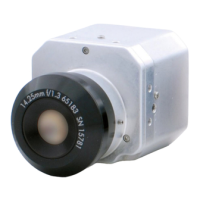48
Appendix C
equipped) thermal imaging systems
provided impetus following World War
II for extensive secret military infrared-
research programs into the possibilities
of developing passive (no search beam)
systems around the extremely sensitive
photon detector. During this period,
military secrecy regulations completely
prevented disclosure of the status of
infrared-imaging technology. This
secrecy only began to be lifted in the
middle of the 1950s and from that time
adequate thermal-imaging devices nally
began to be available to civilian science
and industry.
Theory of Thermography
Introduction
The subjects of infrared radiation and the
related technique of thermography are
still new to many who will use an infrared
camera. In this section, the theory behind
thermography will be given.
The Electromagnetic Spectrum
The electromagnetic spectrum (Figure
5) is divided arbitrarily into a number
of wavelength regions, called bands,
distinguished by the methods used to
produce and detect the radiation. There
is no fundamental dierence between
radiation in the dierent bands of the
electromagnetic spectrum. They are all
governed by the same laws and the only
dierences are those due to dierences
in wavelength.
Thermography makes use of the infrared
spectral band. At the short-wavelength
end of the spectrum the boundary lies at
the limit of visual perception, in the deep
red. At the long-wavelength end of the
spectrum it merges with the microwave
radio wavelengths in the millimeter
range.
The infrared band is often further
subdivided into four smaller bands, the
boundaries of which are also arbitrarily
Figure 5. The electromagnetic spectrum

